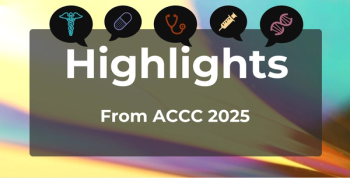
Medicare Hospital Discharges Decline, but Observation Stays Rise, Avalere Finds
The report finds a connection between payment reform and hospital use patterns, but that connection may add to the debate that cardiologists have raised over the effect on patients.
Fewer Medicare patients are being discharged from hospitals, but more are spending time in observation stays, according to an analysis
The findings may add fuel to claims that penalties for 30-day readmission rates drive decisions that harm patients, which some speakers asserted during last weekend’s 67th Scientific Session of the American College of Cardiology (ACC).
Avalere Health’s analysis found that, since 2009, Medicare per-capita hospital discharges have dropped 17%, falling from 284 per 1000 beneficiaries to 236 per 1000 beneficiaries in 2016. Observation stays have steadily climbed in that same period, and Avalere Health said in a statement that this is among the reasons for the drop in discharges.
“Payment models that penalize readmissions and scrutiny of short inpatient stays may be driving more frequent use of observation stays,” said
The Hospital Readmission Reduction Program, or HRRP,
The analysis also examined trends in the use of skilled nursing facilities (SNFs), and found a steady decline in Medicare stays per 1000 beneficiaries, from 1808 in 2009 to 1539 in 2016.
“The long-term erosion in hospitalizations contributes directly to the decline in skilled nursing facility utilization among Medicare beneficiaries,” said Bentley, vice president at Avalere Health. “While hospitals that are aggressively moving to value-based payment are shifting discharges from skilled nursing facilities to home health providers, the biggest driver in the decline in skilled nursing facility use appears to be the reduction in hospitalizations.”
But the shift toward observation is not without controversy. Starting late in 2017 and continuing with a full investigation in JAMA Cardiology in January, leading researchers report an association between HRRP implementation and increasing mortality in heart failure.1 One of the authors on the paper, Gregg C. Fonarow, MD, presented the data this weekend at ACC, while a fellow panelist, Larry Allen, MD, MHS, said the problem is the penalty from CMS in the readmissions program is CMS is 3%, while mortality penalty is 0.5%.
However, a speaker at a separate panel on payment reform, Karen Joynt Maddox, MD, MPH, FACC, said she did not come to the same conclusions from the data.
A study published in
In September 2017, the Society of Hospital Medicine issued a
The report concluded that, “the current use of observation is not a sustainable policy.”
Reference
1. Gupta A, Allen LA, Bhatt DL, et al. Association of the Hospital Readmissions Reductions Program implementation with readmission and mortality outcomes in heart failure. JAMA Cardiol. 2018;3(1):44-53. doi:10.1001/jamacardio.2017.4265.
Newsletter
Stay ahead of policy, cost, and value—subscribe to AJMC for expert insights at the intersection of clinical care and health economics.












































